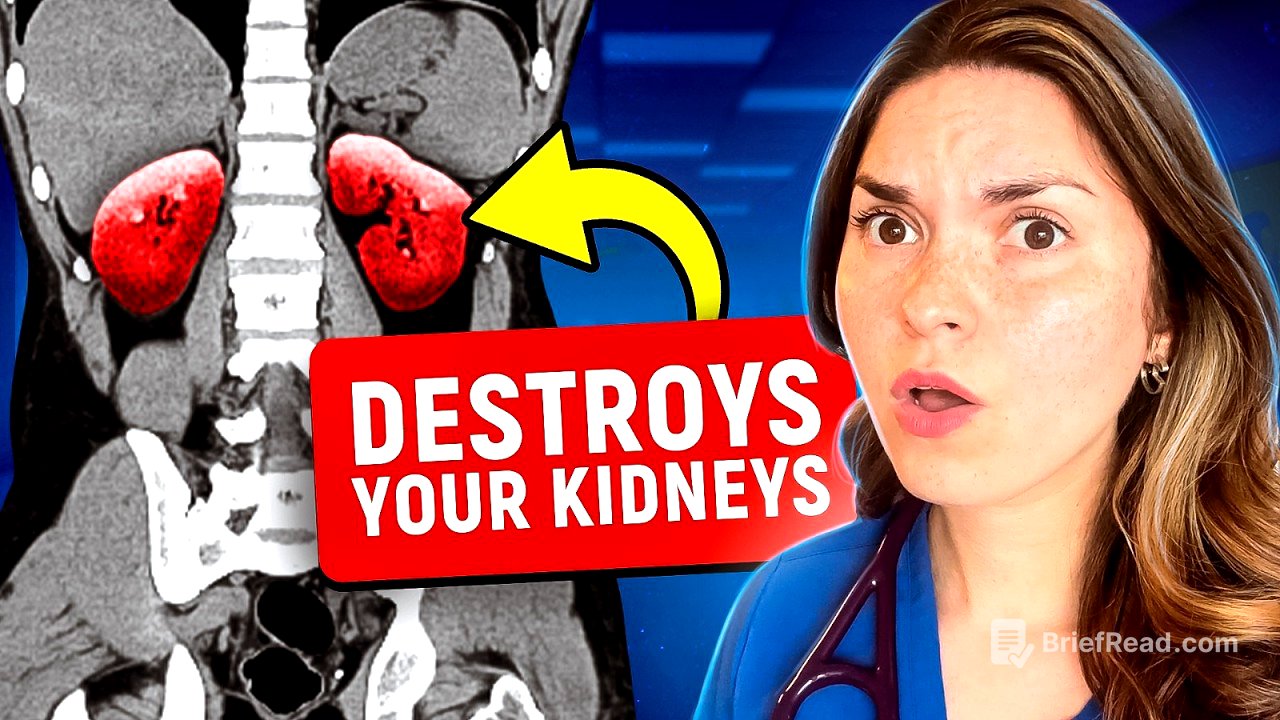TLDR;
This video tells the story of Nancy, a 63-year-old woman who developed kidney damage due to excessive consumption of cashews, which are high in oxalates, combined with a low calcium intake. The video explains how oxalates can cause kidney damage, the importance of calcium in preventing oxalate absorption, and the steps Nancy took to improve her kidney function. The key takeaways are the importance of moderation in diet, balancing oxalate intake with sufficient calcium, and staying hydrated.
- Excessive consumption of high-oxalate foods like cashews can lead to kidney damage, especially when combined with low calcium intake.
- Calcium binds to oxalates in the gut, preventing their absorption and reducing the risk of kidney damage.
- A balanced diet, adequate hydration, and sufficient calcium intake are crucial for maintaining kidney health.
Nancy's Diet Change and Kidney Problems [0:00]
Nancy, a 63-year-old woman, decided to switch from snacking on chips to a healthier option: cashews. Over time, she began experiencing exhaustion, leading her to consult a doctor. Blood work revealed that her kidney function was significantly impaired, filtering at only 25% of a normal kidney. This was a stark contrast to her normal lab results just eight months prior, prompting further investigation into the cause of her kidney damage.
Investigating the Cause of Kidney Damage [1:02]
When approaching a patient with new kidney disease, doctors consider three main categories: insufficient blood flow to the kidneys, problems within the kidneys themselves, or blockages preventing urine from exiting the kidneys. Initial tests ruled out dehydration, heart or liver issues, and blockages. However, Nancy's urine sample was surprisingly normal, lacking the typical signs of kidney problems like high protein levels or misshapen red blood cells, which complicated the diagnosis.
Diagnosis Through Kidney Biopsy [2:27]
Further tests for blood vessel narrowing, autoimmune diseases, and cancer came back normal, but Nancy's kidney function continued to decline. A kidney biopsy was performed, revealing calcium oxalate crystals under polarized light, indicating a condition called nephrocalcinosis. Unlike kidney stones, which form in the urine, these crystals were forming inside the kidney itself, causing damage.
The Role of Oxalates and Calcium [3:52]
Nancy's dietitian discovered that her diet was high in oxalates and very low in calcium. Oxalates are natural compounds found in many foods and are often considered anti-nutrients because they don't provide nutritional benefits and can cause issues. Normally, only about 10% of oxalates are absorbed into the body, but calcium binds to oxalate, preventing its absorption. Nancy's high cashew consumption (about 1 kilogram per week) combined with low calcium intake led to excessive oxalate absorption and kidney damage.
Treatment and Recovery [6:02]
Nancy stopped eating cashews, tracked her oxalate intake, increased her water intake, and added a calcium supplement to her meals. After two months, her oxalate levels normalized, and her kidney function improved significantly. Although her kidney function did not fully recover, she was left with mild chronic kidney disease. The video emphasizes the importance of moderation and balancing oxalate intake with sufficient calcium, aiming for 1,000 to 1,200 mg of calcium per day, ideally through diet or supplements.
Conclusion: Balance and Moderation [7:04]
The video concludes by advising viewers not to eliminate high-oxalate foods unless medically necessary. Instead, it recommends focusing on a balanced diet with enough calcium and plenty of water. Fruits, vegetables, nuts, and grains are healthy and packed with essential nutrients, so they should not be avoided simply because they contain oxalates.









